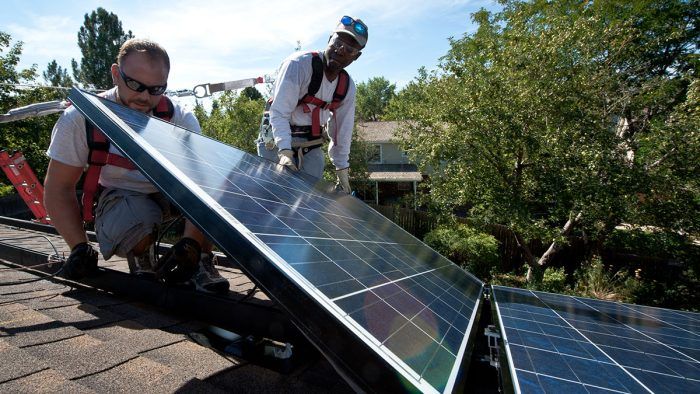Rafter Strength After Removing and Replacing Solar Panels
Does drilling new screws into the roof rafters compromise the strength of the roof?

I’m the owner of a solar installation company in Central Texas. Because of regular hailstorms, we have customers with a roof-mounted solar array that needs to be removed and replaced to access the damaged shingles—for the third time in 11 years. Every time we do the solar panel replacement and reinstall the panels, we drill a new set of lag screws into the roof rafters. How many times can we do this before the rafters’ strength is compromised? I asked a local engineer, who said, “Wow, I hadn’t thought of that.” (For the record, it’s the shingles that are damaged by hail. Of the hundreds of solar installations we’ve done, only once have we seen PV panels damaged by hail.)
— Howard “Scot” Arey; Central Texas
Loren Ross of Altenloh, Brinck, & Co Replies
As far as the rafter question, I informally consulted with the American Wood Council to make sure there isn’t research I’m overlooking, but to our knowledge there isn’t a satisfactory answer to your question because there’s no research on the subject. We came up with two ways of looking at the problem. Unfortunately, neither is very helpful for the solar installer.
First, a structural engineer could reevaluate the rafter based upon the section loss. Basically, this would be running the calculations substituting a U-shaped cross-section instead of its original rectangular one. This method would probably be overly conservative, and the engineer would need to know the precise location of the screw holes.
The second method is likely more accurate, but has its own limitations. The rafter would be re-graded with the former screw spots being considered holes or unsound knots. This method would be tricky because certified graders aren’t as ubiquitous as structural engineers. Also, the grading agencies each have slightly different rules, so it wouldn’t be a one-size-fits-all solution.
All of the above is to figure out if there is a problem, but repairing the holes might be easier than the evaluation. Injecting epoxy or driving in tight-fitting wood-glue-coated dowels would probably overcome the effects of the hole. It’s also worth considering that these holes are on the compression side of the rafter (assuming uplift isn’t too significant) and wood usually fails on the tension side, so the holes’ effects are probably minimal. But all this is speculation, because we don’t have the research. It seems like something the solar or insurance industry should consider funding.
— Loren Ross of Altenloh, Brinck & Co
RELATED STORIES
Need help?
Get answers you can trust from the experienced pros at FHB. Email your question to [email protected].
Fine Homebuilding Recommended Products
Fine Homebuilding receives a commission for items purchased through links on this site, including Amazon Associates and other affiliate advertising programs.

Shingle Ripper

Flashing Boot

Roofing Gun




























View Comments
I would refer the question to the PV rack suppliers and the PV panel manufacturers.. Not that I have any better ideas at the moment, but running screws into rafters is a pretty crude way of mounting PV panels, clearly an afterthought approach. As the OP and the responder mentioned, it's going to tear the rafters up, shiners are almost inevitable, running screws into shingles will give any competent roofer nightmares AND we still haven't addressed the original problem- that style of mounting makes it hard to maintain the roof and the PV panels.
Residential roof-mounted PV panels are part of life these days- they're no going to (and shouldn't) disappear. We need mounting systems that actually take a systems approach. The question above says it's the shingles that are usually damaged by hail, not the panels. That suggests that the two should be independent when it comes to maintenance- you can replace one without significantly affecting the other. Also, since they seem to be more durable, the PV panels should be the primary weather surface, as much as possible. GAF & Elon, bless his heart, may be on the right track, but you'd never know it based on market shares.
So, I think the answer to this question is not to answer it, but ask why it's even a a question at all.